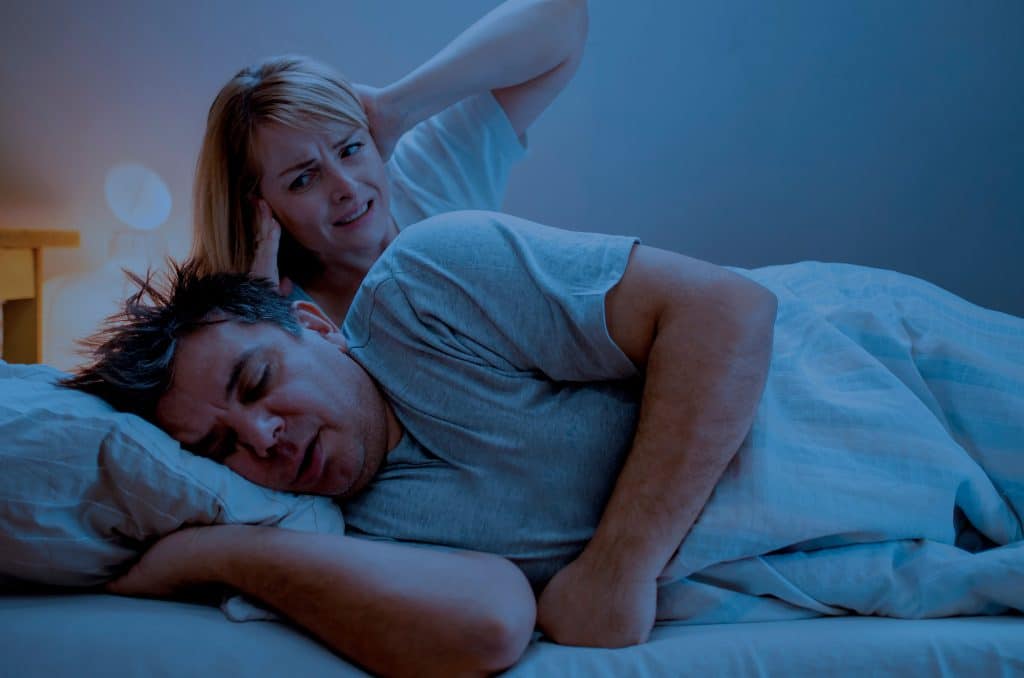[vc_row][vc_column el_class=”pages-contenu”][vc_column_text]Snoring correction with surgery
Produced by the soft palate when it vibrates, snoring usually occurs during sleep or during naps. It can be difficult to live with snoring, both for those who have to endure this vibratory phenomenon and those who produce it.
A proper diagnosis is essential to determine the causes and to assess the proper treatments depending on the intensity of the problem. The patient who snores sleeps with his mouth open and breathes through both the mouth and nose. The elderly or obese people are the most affected. Excess alcohol, smoking, fatigue, deep sleep or large meals promotes snoring. Sleeping on your back or having a blocked nose can also cause snoring. In the case of children, it is due to enlarged tonsils or adenoids. Snoring is also common during surgical anesthesia.
Snoring is not only a nuisance; it is a real public health problem, too often unconsidered.
Snoring treatment with surgery
Snoring is a symptom of a partial airway obstruction. The snoring treatment must consider the presence or absence of sleep apnea. Several treatments against snoring are not effective to treat sleep apnea. There are several surgical treatments with variable efficacy on snoring.
The evaluation, the most important step
Snorers can be classified into four categories. Those who are simple snorers with no obstructive sleep apnea, patients with mild obstructive sleep apnea, those with moderate apnea and finally those with severe apnea. Surgeries for snoring can be possible only in patients presenting either mild or no obstructive sleep apnea but may be used to treat patients with moderate and severe apnea when combined with other therapeutic measures.
It is therefore important that all patients initially proceed to a sleep study in order to determine in which category they classify and whether obstructive sleep apnea syndrome is present or not. A complete clinical examination with nasal pharyngoscopy will determine the most problematic areas. While the palate and uvula are the most commonly involved structures, nasal cavity, base of the tongue and throat can also be the source of snoring. It is important to identify these areas in order to establish a personalized treatment plan that will be effective.
A conservative surgical approach
Many patients enter our offices expecting a single intervention to solve their snoring problem. Often a step by step approach is best. This approach has a few minor procedures instead of a major one and provides a better result with fewer complications and side effects.
For example, radiofrequency of the palate requires one to three sessions in order to get the desired result. This is the most commonly used one to treat a snoring problem without sleep apnea or mild sleep apnea. The radiofrequency is used most often on the palate and uvula and is a very effective treatment for snoring. The base of the tongue can also be reduced by radiofrequency.
Many surgeries are possible
The removal of the tonsils can be considered when these are prominent and contribute to snoring. Other less frequent interventions are sometimes necessary to treat snoring in a more complete and definitive way. If nasal obstruction is present and a deformity or the presence of adenoids is the cause, intervention at this level will be indicated.
Nasal surgery may involve removal of adenoids, shrinking of nasal turbinates, correction of a deviated nasal septum or nasal cartilage reconstruction in severe deformity. Major surgery such as orthognathic surgery certainly have a healing effect on snoring, but are only used in cases of moderate to severe apnea and in which non-surgical treatments have proved to be ineffective. Indeed these interventions, although well tolerated by patients, are considered too aggressive for a simple snoring problem.
Put the odds on your side
We must not forget that the snoring surgical treatment, despite any type of surgery, will have a better chance of success when conservative measures without surgery are used concomitantly. These measures can sometimes solve the problem either by themselves or at least in part. Sometimes it is impossible to correct snoring completely or satisfactorily with surgery alone and other non-surgical measures should be used to obtain a satisfactory result.
[/vc_column_text][vc_row_inner][vc_column_inner][/vc_column_inner][/vc_row_inner][/vc_column][/vc_row]
